|
Common wisdom dictates that house painting should be done when during summer when the daylight is long, the sun is up, and temperatures are ideal for the paint. But when the cold weather starts rolling in, does it mean that it’s too late to pain your house and any painting job should wait until the following year’s summer season already? While painting outdoor surfaces poses several problems and challenges, painting indoors can be done at any time of the year, even during winter.
When painting indoors, the weather does not cause so much trouble because conditions indoors can be regulated so that the paint can dry and cure despite the conditions outside. For optimum results in your indoor painting job, read on to know more about some tips that can help you with a successful painting job during the cold weather Important Pointers to Remember When Painting Indoors During the Cold Weather1. The Type of Paint A special consideration when you are painting indoors, especially during the cold months, is the type of paint you will use for the job. Most paints give off fumes while they dry and cure. These fumes are made of chemicals called volatile organic compounds that can be harmful to you, your family, and your pets. They also smell really bad and will tend to irritate your nose if you inhale them. So, if you don’t take precautions, you will be exposed to some really uncomfortable conditions. If you will not be using the room you are painting soon, you can simply leave the room for a very long time to let fumes completely dissipate out of the room before you use the room again. However, that would be a complete waste of space and in the cold weather you can’t just leave a window open to allow the fumes to dissipate. You can counter this issue by using low- or non-VOC paints. These types of paints are considered to be the safest types of paints because they either have reduced levels of volatile organic compounds or none at all. This makes such paints convenient to use for indoor painting. Their smell is not as strong as regular paints and not as irritating so you can use the room soon after you have finished the painting job without worrying about health issues for you and your family. It’s even safe enough to sleep in a few hours after the paint has set. On the other hand, these paints are a pricier alternative compared to regular paints. They are specially designed so that the harmful fumes from VOCs are reduced which makes it more complex to produce. You also have a limited variety to choose from in terms of paint colors. Even with such disadvantages, the convenience of being able to use your room soon after painting it is a reward that can outweigh the disadvantages. In addition to that, there really should be no price for the security that your home is safe from harmful chemicals that can cause health issues to you and your family. 2. Outdoor Temperatures It’s not impossible to do a painting job indoors during the cold weather, but you still will need to take into consideration the temperatures outside because the cold temperature permeates into the indoor environment. In general, paint needs to be applied when the ambient temperature is between 50-70 degrees. Lower than these temperatures, your paint will freeze, and you will have problems with regards to color quality, water spotting, inconsistent drying time, and film-cracking. What you can do is schedule your painting job when the weather is not too cold. Thankfully, the winters in Georgia are mild enough that you can possibly paint your indoor rooms during winter without a problem. The winter season might even help your paint dry faster because of the low humidity in the air. When the air is dry, it quickly picks up moisture so you won’t need to worry about extended drying periods. But less humid winters is not always the case though, so it still pays to be sure to check actual humidity levels. If humidity is high, takes extra precautions to ensure that the surfaces you are painting on is dry. 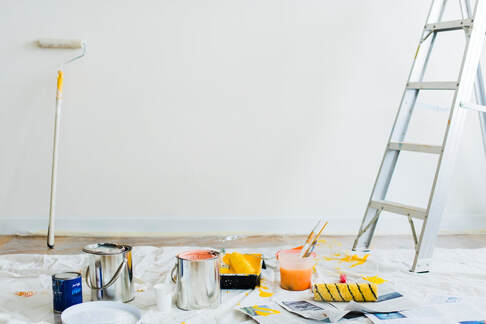 3. Your Wall’s Temperature Even when the ambient temperature in the room you are painting on has already been controlled, the walls that will receive the new paint might not have the ideal temperatures. This is true for walls that have their opposite side exposed to the outside of the house. The cold temperature from outside can easily permeate through the walls so that the wall will have a cold temperature compared to the ambient atmosphere in the room. If this is a problem for the room you are painting in, it might be useful to turn up the heater above your desired ambient temperature so that the cold air permeating through the walls can be countered by the heat given off by your heaters. 4. Heating Bill When you’re painting during the cold weather, you might be tempted to crack open a window to let out the fumes coming from the drying paint. This method will increase your heating bill because the cold temperature from the outside will move into the room. This means that your heater will have to work extra hard to keep your room warm, thus, you have a raised heating bill compared to your regular bill when you’re not doing any painting job. Another reason for the increased heating bill is that if the temperatures outside are too cold, your heater will need more energy to maintain the optimum temperature for your paint so that it will dry thoroughly. To avoid needing to open windows to vent out fumes, you can use low- or zero-VOC paints that don’t expel harmful fumes so that no fumes will need to dissipate out of your room. And to avoid the problem of your heating working too hard to maintain optimum temperatures, you can schedule the painting job during times when the temperature outside is not too cold. 5. Ventilation It’s not always possible to have adequate ventilation in your newly painted room during the cold season. Since opening windows or doors while your paint is drying will pose problems for you, including higher heating bills and the possibility that unwanted elements from the outside will enter your newly painted room, you might want to consider setting up temporary ventilation in your room. These will help the paint dry faster and save you from the irritants coming from the paint. With all these things in mind, here are some reasons why you might opt to paint your interior rooms during winter:1. Your room needs it. If you see your room sorely lacking the color that you want it to be, the cold weather shouldn’t stop you from painting your room. After all, there are solutions that will allow you to paint indoors when the weather outside doesn’t permit it. 2. There’s not much competition for paint contractors during winter. Winter is not painting season. So, if you’re planning to have your room painted by contractors, which is always a good idea if you are particular about the quality of the painting job, the winter season will be helpful for you as it will be easier to find contractors who are available to do the painting job. You might even get a discount because it’s not peak season for painting jobs. 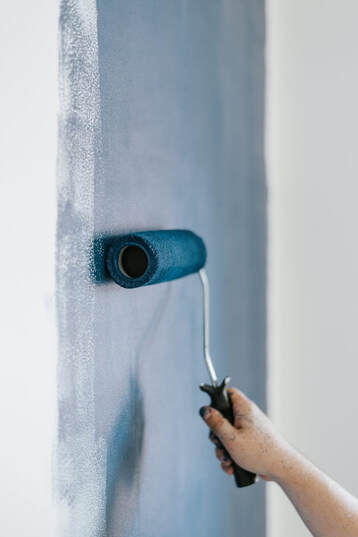 3. You might not have time for painting rooms during summer and spring. When the weather is nice, there are plenty of activities that you can do other than painting a room. You can use your time for all the outdoor activities that you want to do during summer and spring instead. In addition, you might want to hold parties in your home during these seasons, so it will be best to have your rooms ready for those parties before these seasons actually rolls in. Come winter time, when you suddenly feel the urge to freshen up your rooms with new paint, the cold weather outside will not be a hindrance for you anymore. With all the tips written above, you can surely paint your rooms without worrying too much about the effects of the cold weather outside. Just make sure that you use a paint that’s safe to use even without ventilation or one of those paints that can tolerate a colder temperature compared to regular paints and you are set to paint.  If you need a reputable house painting professionals in Warner Robins, Macon region who understand the needs of their clients look no further. Contact the experts at Pizzazz Painters Warner Robins. Check us at https://www.pizzazzpainterswarnerrobins.com/ and schedule your appointment for a free painting estimate or call us at 478-292-2821. We are here to help! Painters proudly serving in Warner Robins, Macon, Bonaire, Byron, Kathleen, Lizella, Perry, Fort Valley Bibb County Georgia, Houston County Georgia, Peach County Georgia, Macon County Georgia, Crawford County Georgia. It’s always a good idea to paint a house. A freshly painted house won’t fail to spruce up your mood and make your house seem like the loveliest place on earth. But, would it be alright to paint your house at any time during the year? Like, what if you wake up feeling blue one morning in the winter and suddenly decide that your house needs fresh paint or some old friend from afar suddenly decides to visit you but it’s already winter and you haven’t freshened up the house’s paint during the summer period.
This is an essential bit of information to note especially if you live in a desert because the difference in day time and night time temperatures in such areas can be on the extremes that you can be experiencing a very hot day but the night could be as cold as 25 degrees. The same is true for areas with high elevation because these places generally get lower temperatures than their low elevation counterparts. For example, Georgia generally has mild winters; so, much of the southern portions of the state is only deprived of the choice to paint their homes during December and January. However, for the mountainous regions, the winter can be brutal with heavy snows and very low temperatures. Painting at Low TemperaturesIf you really must paint your house during the colder weather, take heart because it’s not really impossible. You just need to get low-temperature compatible paints. These paints are specially engineered so that they can set and cure even when temperatures reach 2 degrees outside. They’re special paints, however, so you won’t have the same array of choices as to when you’re painting during spring or summer and you can’t opt for that lovely smooth finish that you get from oil-based exterior paints. In addition to that, not all low temperature compatible paints are created equal. Some paints such as low-temperature acrylic paints can be applied only when the temperature will be between 35 to 50 degrees for at least two to three hours straight. Other Considerations When Painting at Low Temperatures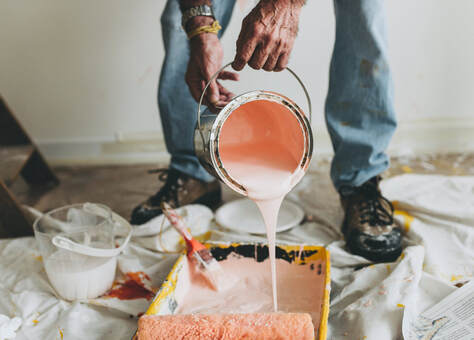 It’s also important to make sure that there will be no sudden dips in temperatures while your paint is curing. This is tricky because various paints have various requirements for curing time. To add to this, Mother Nature is also tricky and unpredictable so the weather forecasts are never truly accurate. Other things that you need to keep in mind when you’re painting during the colder season, include the materials you will need for the painting job, the ideal time of the day to work and moisture. When you’re painting your house, you might be tempted to get on with your painting job right after you get your low-temperature compatible paint. However, you still have to think about materials such as the caulking and primers that you will use while you’re painting your house. These materials may require warmer temperatures so you also need to make sure what kinds you use are also compatible with cold temperatures. As regards the time of day, it’s best to start working as soon as the sun comes up and plan your painting job to coincide with how the sun moves around your house. This way you can paint the side of your house which the sun teaches to provide it with a warmer temperature. Take note also that daylight hours are relatively shorter during the winter season so you have a shorter window of time to finish your painting job unless you’re fine with using artificial lights when sunsets which is not practical anyway because then there will be a colder temperature and you can’t see details in the evening as well as you see them during day time. Lastly, be careful of moistures that stick to your surfaces because they can get trapped under the paint and ruin your painting job. This means that while you’re painting, you will have to make sure that the surface you are painting is dry and free from moisture. So, if you really must paint during the cold season, check with your paint providers for low-temperature paints and while you’re at it, make sure to ask about the ideal temperature range for your chosen paint and how long they will need to cure. Also, check your weather forecast to make sure that you will have a decent temperature for the proper application of your paint. Unlike exterior painting, indoor painting is more accommodating because you can manipulate the environment inside your house better that the exterior of the house. For instance, if you were dead set on painting your exterior walls during the winter, you’ll have to work with the eager amount of sun you will be having or you might have to build a bubble for the parts of your house that you will be painting to protect them from the tough weather conditions. In the interior parts of your house, you’re in control of the conditions. For the most part that is. First, you won’t need to worry about sudden drops in temperature because in winter, you will have a heater running already. Your heater will take care of your paint’s temperature requirement. You will still need to check with your paint providers about the best temperature range for applying the paint you selected and make sure to set your heater is set for such temperatures. It might even be advantageous for you to paint the interior of your house during the winter because the low humidity during this time will be ideal to allow your paint to dry at a shorter time compared to when the humidity is high. But there are also disadvantages to painting the interior of your homes during winter. The main disadvantage would be that the kind of paint you use must be one of those low VOC paints to make sure that it is safe. Since you can’t leave your windows and doors open for long periods during winter, the paint fumes will tend to stay indoors. For many types of paints, there are huge amounts of fumes that will be emitted as the paint dries. These paint fumes are made of chemicals that are harmful if inhaled for long periods of time and many of them will leave your house smelling bad. Low VOC paints are now more common so it’s easy to procure them if you need to paint the interior of your house during winter. Another disadvantage is the amount of electricity you will need to heat your home so that the temperatures will be ideal for the curing of the paint that you apply on your walls. For regular paints, you’ll want to keep your room above 60 degrees. The higher you set your temperatures at, the higher your electricity bill will be. This problem is even made worse when you decide to crack a window open to let out some fumes from the paint. Having open windows will make your heater work harder to keep temperatures at your desired level so you the heaters will need to use more electricity which translates to a higher bill. To wrap things up, your paint needs be applied at a certain temperature range so that it will be applied well and it will yield to the desired result. The best time of the year to have your house painted is generally during spring and summer. If you’ve already missed that window, it might be best to wait for the following year to have the painting job done. However, if it is necessary for the painting job to be done during winter, you still have options and if you carefully pay attention to the conditions, you can still get a decent result in your painting job. Simply choose a low-temperature compatible paint and monitor the weather carefully. Aside from the paint, also make sure that the other materials you will be working with for the painting job are those that can withstand the harsh temperatures of winter.  If you need a reputable house painting professionals in Warner Robins, Macon region who understand the needs of their clients look no further. Contact the experts at Pizzazz Painters Warner Robins. Check us at https://www.pizzazzpainterswarnerrobins.com/ and schedule your appointment for a free painting estimate or call us at 478-292-2821. We are here to help! Painters proudly serving in Warner Robins, Macon, Bonaire, Byron, Kathleen, Lizella, Perry, Fort Valley Bibb County Georgia, Houston County Georgia, Peach County Georgia, Macon County Georgia, Crawford County Georgia.  Painting your house, whether it is interior painting or exterior painting, can get really costly. The cost of paint and the amount of paint needed is enough to detract people from embarking on a house painting project. However, paints don’t just beautify homes, it is also essential to protect the quality of the house. So, when a house painting job is necessary, it would be nice if there would be ways of reducing costs without having to skimp on the quality of the paint to be used. One way costs in home renovations can be reduced is if it is deducted from taxes. Unfortunately, house painting, much like other home repairs, is not tax deductible. The only time repainting your house becomes tax deductible is if it becomes part of the capital improvement of your house after it has been damaged in a fire or natural disaster. Even this does not mean that you can include the cost of the house painting job in your annual filing of tax deductions. You can only use this when you sell your house because it will form part of the original value of your home. 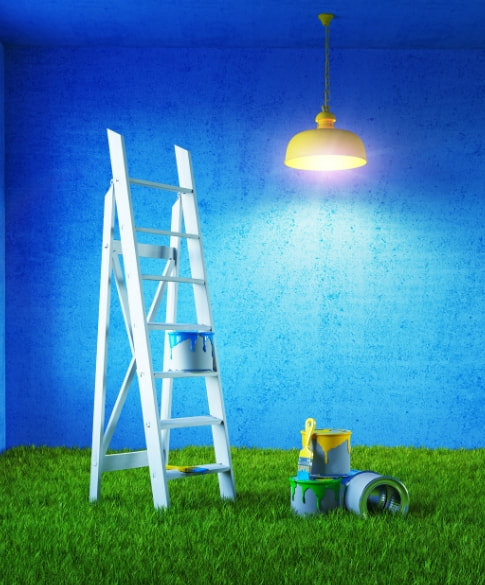 So, what is the capital improvement and in what way can you use it to deduct the cost of house painting from your taxes? This is actually a roundabout way of getting tax deductions for your house painting because you can only use this when the time comes for you to sell your house as an addition to your cost basis rather than as tax deductions in your annual filing. Still, it saves a lot of money so it’s worth learning about. Capital improvements are additions or alteration to real property that either substantially adds value or prolongs the useful life of the house, becomes part of the house in such a way that would cause material damage if it were removed, or intended to be a permanent installation. This means that the work done in your home is substantial enough that it becomes a part of the real property. An example of capital improvement are installing kitchen cabinets, replacing the roof, adding a bedroom and more. Capital improvements are beneficial when you want to make your house look nicer and add more value to it as you are selling it in order to get a greater price for the house. For example, building a deck around the house will increase its value. Unfortunately, painting is still not covered in the capital gains of the house. The only circumstance wherein house painting can be included in the capital improvement is when the house burned down or there had been a natural calamity which destroyed. Here, the homeowner is forced to rebuild the house or restore it to its original condition, including the house painting. Exceptions Exceptions to this rule are when you use your house as a home office or when you are renting out the house. Repainting a home office can be deducted as a business expense but only for the portion which you use as the home office. So, when you repaint your entire house, the deductible portion only corresponds to the proportion of the home office. For houses that are being rented out, everything you do to manage, conserve, maintain, or repair the house becomes tax deductible. 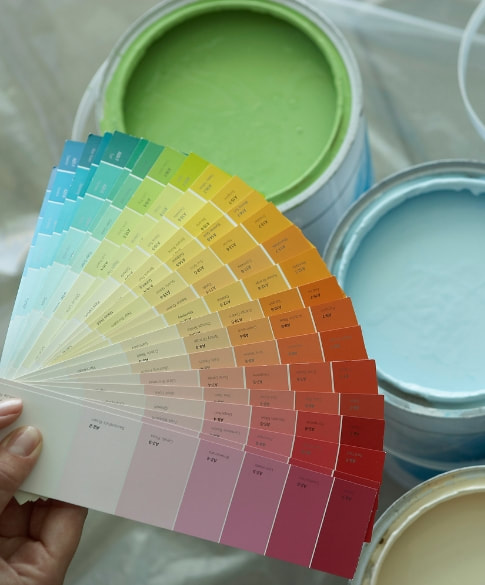 Ways of Reducing Cost in your House Painting Project
Different painters have different capabilities and so different pricing for the job that they do. When you’re pondering on a painting job for your house, look at several contractors or painters, some painter somewhere will offer you a lower price for the same amount of work. Of course, this goes without saying that you still have to look into the quality of work produced by the low-cost painter you have just found.
This is because when there are already portions of the wall with peeling or flaking paint, it takes a significantly larger amount of time to do the painting job correctly because it takes more time to prepare the surface for the paint to adhere. You’ll want your new coat of paint to adhere to the wall well so that you can save future costs of repainting. This then drives up the cost of labor, which is the biggest cost in house painting.
As mentioned in the previous item, labor costs constitute the biggest cost in house painting. This means that if you can do the job yourself, you’d save tons in the painting job.
Colors affect painting job so much that a lot of thought has to go into choosing it. For one thing, you’ll want the paint colors to be ones you actually like. Then of course, you’d want them to be pleasing to your visitors and to harmonize with all the other things in your home. And, perhaps more importantly, you want to think about the paint colors because they affect the cost of the painting job. For example, a repainting job using just the same color can save you a coat of paint, hence, lesser cost. Another thing you have to think about when choosing colors is that using too many colors in your house painting job will increase the labor cost because painters will have to switch from one color to another. Some great house colors that are commonly used in Georgia are autumn red, cypress blue, and desert tan.
Walls absorb paint and when you don’t use primers on your wall before painting, the wall will absorb a large proportion of your paint. Primers are way cheaper that paint, so better for the wall to absorb the primer than that expensive paint. In addition to that, primers also allow for a uniform coverage of the primed surface.
Using cheaper paints does not actually save house painting costs. If you want to save on the cost of a painting job, a good quality paint will reduce your costs because it is a lot more durable than its cheaper alternative and it will only require fewer coats in order to cover the entire surface. So, house painting is definitely an expensive endeavor for homeowners and its cost is cannot be directly deducted from your taxes. Still, there are a myriad of ways to reduce the cost of house painting. Since labor costs have the highest proportion of that expense, it is then advisable to reduce that cost as much as you can. For one thing, you can reduce the cost by doing the painting job yourself, or if you’re not so confident about your house painting skills, you can do some parts of the job which wouldn’t show in the final output such as painting the primer. This not only saves you the cost of labor, but using primers also save you the cost of using too many paints. Painters in Warner Robins, GA / Painters in Macon GA and adjacent areas If you need a reputable house painting professionals in Warner Robins, Macon region who understand the needs of their clients look no further. Contact the experts at Pizzazz Painters Warner Robins. Check us at https://www.pizzazzpainterswarnerrobins.com/ and schedule your appointment for a free painting estimate or call us at 478-292-2821. We are here to help! Painters proudly serving in Warner Robins, Macon, Bonaire, Byron, Kathleen, Lizella, Perry, Fort Valley Bibb County Georgia, Houston County Georgia, Peach County Georgia, Macon County Georgia, Crawford County Georgia. 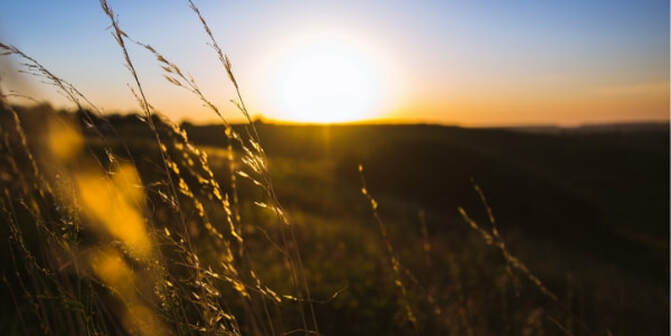 Painting a house can be exciting if you're looking forward to giving your home a fresh new look, but you may want to check your calendar before taking out those paintbrushes, because- surprise, surprise, house painting is not something you can do year-round. So when is the ideal season to paint a house? Generally, it is best to paint a house in summer, when it's dry and warm, which are ideal conditions for letting the paint cure properly. It is important to consider the proper temperature to achieve the best results, and summer tends to be the best choice as there is less chance of rain, and there are no freezing night temperatures which can cause the paint to peel or crack. There are other factors to consider, however, when determining the best time to paint. These factors include which part of the house you intend to paint, your location, environmental conditions, and even the type of paint you plan to use. 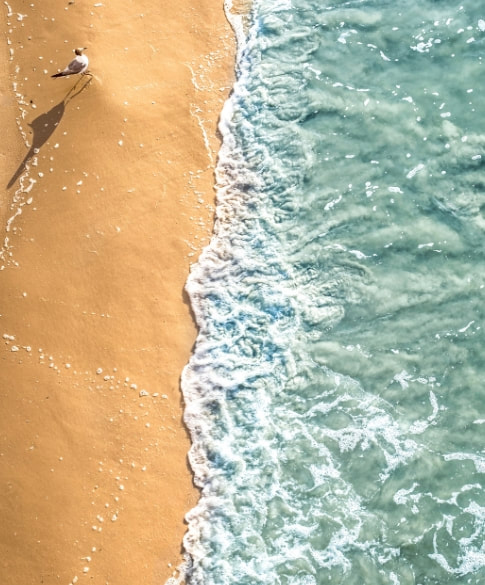 The Ideal Season When Painting the Exterior or Interior of the House Choosing when to paint a house may depend on whether you want to do indoor painting or outdoor painting. For exterior painting, you have to carefully consider the temperature and environmental conditions outside. An ambient temperature of 50 degrees is usually accepted as ideal for painting outdoors. For obvious reasons, it is not recommended to do exterior painting in freezing temperatures or during wet weather. In temperatures that are too hot, the paint may dry too quickly and stick to the brush. The heat and humidity may also ruin the finish. All things considered, the best seasons to paint outdoors are summer and spring. If you are thinking of painting the interior of your home, however, you may want to consider painting in the winter. You may still paint in summer, but too much heat can cause unwanted marks, stains and uneven finish. The humidity can also affect how quickly the paint can dry and stick to the wall surface. Winter may be ideal for painting indoors for a number of reasons. First, if you're snowed in or just can't leave the house because of the cold, what better way to pass the time than to beautify your home with a fresh new coat of paint? New colors on your wall can help lift your mood despite the gloomy cold of winter. Second, winter means cold weather, which means less humidity. Less humidity allows the paint to dry faster. Paint drying faster means more relief for you as you won’t have to worry too much about your arm getting stuck on wet paint as you walk into the kitchen, or about the kids leaving their silhouettes on your new masterpiece in the living room wall. And lastly, if you plan to hire professionals to do the painting for you, there is less demand this time of year. Cold weather is bed weather, and the last thing on people’s minds this season is house painting. And since there is less demand, service costs of contractors tend to be lower. You may want to keep this money-saving tip in mind when getting when professional painting services. With indoor painting, you have more leeway to choose when you want to paint, as you don't have to worry much about snow, rain or wind affecting the paint. 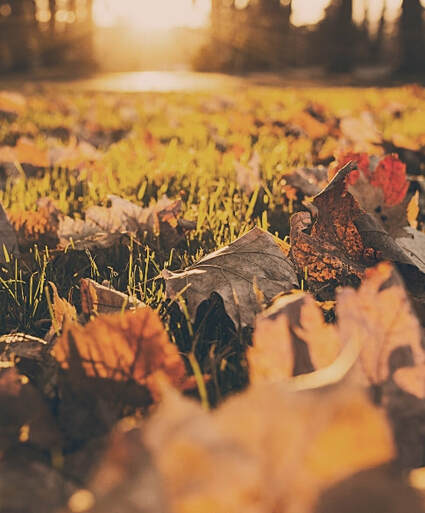 Can Location Be a Key Factor in Planning When to Paint My House? Not surprisingly, environmental conditions may be different depending on your location. So where you live is definitely another factor in planning when to paint a house, especially if painting the exterior is involved. If you live in Georgia, you may want to consider doing your painting project in the fall instead of summer. In this locality, fall brings mild temperatures, in contrast to the high temperatures of summer, and there's not much humidity which can keep paint from drying properly. Georgia is known to have extremely scorching hot summer days, and that heat and humidity could destroy the paint finish, not to mention give you really bad sunburn or cause a medical emergency. In Connecticut, spring may be a good time for you to paint your house since it is not too cold, but also not as blazing hot as summer. But in Colorado, spring tends to be the time when more rainfall is to be expected, which makes it less than ideal to do a paint job. Wet weather compromises paint's ability to dry properly- if it doesn't wash it all off first, that is. 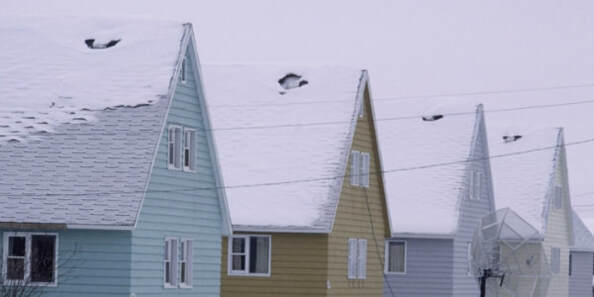 Environmental Conditions That Affect the Quality of Your Painting Wherever your location is, keep in mind that temperature, humidity level, and weather conditions all have an effect on how well paint dries and stays on the wall. Temperatures that are too high or too low can lead to poor paint quality. Freezing cold temperatures result in surface cracking, uneven color, staining, and problems with curing. On the other hand, too much heat also causes issues, such as discoloration, peeling or bubbling of the paint, or other surface imperfections caused by the paint drying too fast. The ideal time to paint is when the temperature is not below 35 degrees Fahrenheit, and not over 90 degrees Fahrenheit. Humidity also affects how paint dries.At this point, you might be wondering what that word really means. Humidity, according to Britannica.com, simply means the amount of water vapor in the air. When we say it’s a humid day, it means that the there’s a lot of water vapor in the air, so it feels warm and moist and sticky. If there’s already a lot of water vapor in the air, the water in your paint may have a hard time evaporating, which causes a sloppy-looking finish that you most likely will have to scrape off and do all over again. However, if you plan to wait for a completely non-humid day to start painting, you might never accomplish anything. Humidity is almost always present. So what to do? Wait for the ideal humidity level. When the humidity level is 40 to 70 percent, you can start bringing out those painting tools, as these are considered the ideal humidity levels for house painting. Wind conditions can also affect the quality of the exterior painting. Strong winds can cause bits and pieces of objects to stick to your freshly painted wall. And if there is a chance of rain, put off your painting for another day. Remember, if you wouldn't hang the laundry outside in that weather, don't even think about painting Oil-Based vs. Water-Based Paint Reaction Depending on Temperature We have already established that environmental conditions affect the quality of our painting. That being said, different types or brands of paint react differently to different temperatures. Paints use either oil or water as a base, and then mix in four (4) main components: resin, additives, solvent and pigment. Now let's see the difference between water-based and oil-based paints: ● Water-based paints- these are also known as latex paints, even if they actually don't contain any latex, or emulsion paints. Most wall paints are water-based since they dry faster, are more environment-friendly because they have fewer volatile organic compounds (VOCs), and are easy to clean up with water. According to The Spruce, “water needs to evaporate at a rate as fast or faster than the solvents. If the water interferes with solvent-drying, then the paint cannot form a hard surface.” In high humidity, the water in these types of paints cannot evaporate faster than the solvents, and results in the paint being saturated with water. A soggy-looking wall is not a pretty sight, and definitely not what you would want for your home. Water-based paints dry also slower in really warm temperatures, needing four (4) hours or more before you can apply the second coat. And of course, it is highly discouraged that you use water-based paints in low temperatures. Water freezes, and when that happens, you will find yourself with semi-solid paint which you will need to thaw. ● Oil-based paints- also called alkyd paints, are based on natural oils and resins. Some people choose these paints because of their durable finish, and high viscosity, which means fewer coats are needed. These paints were popular years back, but are less often used nowadays, as technology has advanced to develop better paints. Oil-based paints tend to become brittle and chalky. They also become more thick and gluey in lower temperatures and need thinners to be added. According to GSL Painting, the rule of thumb is that if you are painting with oil-based paint, the ambient temperature should be above 45 degrees Fahrenheit for at least 48 hours. Water-based paints typically require higher temperatures above 50 degrees Fahrenheit . Some paints, however, are formulated to dry at lower temperatures, even as low as 35 degrees Fahrenheit.  Tips When Painting in the Summer to Avoid Negative Effects of Heat and Humidity If you do choose to do your house painting in the summer, keep in mind the following tips to avoid any negative effects of too much heat and humidity: 1. Do your painting in the early morning or in the early evening just around sunset, when the temperatures are cooler. As much as possible, do not paint in the afternoon when surface temperatures are high. 2. Avoid painting in direct sunlight or on a hot surface, as this would affect not only the quality of the paint but would also be bad for you. 3. Stay in the shade. Start painting on the side of the house where the shade is, then move as the sun changes positions throughout the day. 4. Check the weather forecast and humidity levels. Again, the ideal time to paint is when the humidity level is 40 to 70 percent. 5. If you are doing your painting indoors, ensure that there is enough air circulation. Open the windows so that the paint can dry properly. Use a dehumidifier if needed. 6. Mix up to 5% water to your paint to keep a good consistency. 7. To keep the paint from drying on the paintbrush too quickly, have an extra paintbrush in a bucket of water. Alternate using the 2 brushes to prevent them from drying out. 8. If you are going to apply more than one coat of paint, consider surface temperatures in determining the time it will take before you can apply the next coat. 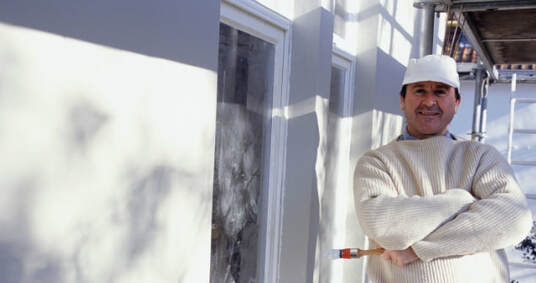 Call the Experts Painting properly in any season can be challenging, and while it can be a fun project, it is best to hire experts and professionals to do your painting jobs. Typical painting jobs should be able to last for five years, but if done properly, it can last for as long as 15 years. Contact the painting contractor nearest to you for professional painting jobs. Painters in Warner Robins, Macon, and adjacent areas If you need a reputable painting contractors in Warner Robins, Macon region who understand the needs of their clients look no further contact the experts at Pizzazz Painters Warner Robins. Check us at https://www.pizzazzpainterswarnerrobins.com/ and schedule your appointment for a free painting estimate or call us at 478292-2821. We are here to help!
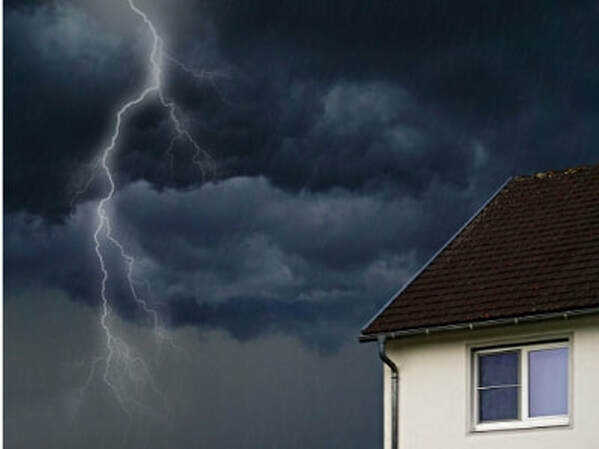 "A few days back, I was cleaning the garage when it started raining cats and dogs, and since I was momentarily stuck there, I noticed my drab-looking garage walls and thought about painting them. My question is, can you actually paint inside the garage when it’s raining?" Under most circumstances, the answer is yes, as long as you are sure your garage walls stay dry despite the rain. Painting in the garage is considered interior painting, and when it comes to interior painting, there aren’t many limitations that can affect the timing of your painting, as opposed to exterior painting where weather can be a huge factor. It may even be a great idea, as the rain will keep the dust outside from flying in and sticking to the paint. However, you may want to do some preparation before painting that garage while it’s raining, or else your painting project might go down the drain. 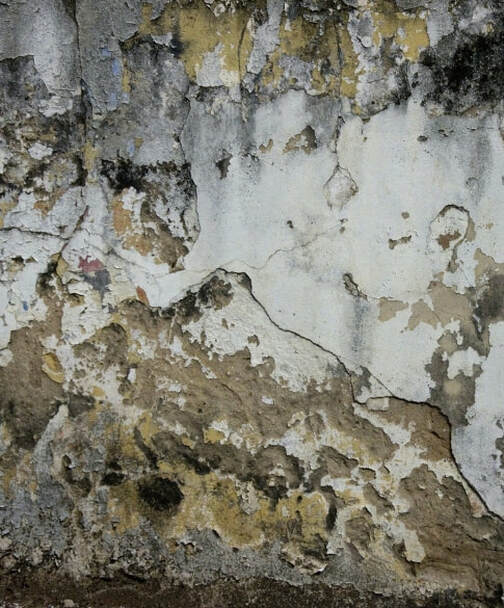 Check Your Garage for Dampness Before Painting Although you will be working indoors, there is no guarantee that your garage walls, floors or door will stay dry all throughout your rainy day painting project. What happens if water seeps in while you’re painting? The most obvious answer is, the water will wash away the paint, or cause it to have unsightly streaks. If you paint on damp walls, the finish could turn out bubbly, cracked, or peeling. Dampness could be caused by a number of factors, though, and it is important to be able to identify what causes damp walls. Below are some of the common causes: 1.Rising Damp Rising damp happens when water from the ground rises and passes through capillaries of buildings or structures. If you find damp patches or stains, peeling paints, powdery white deposits or black mold on your walls, in the areas near the floor, that is most likely because of rising damp. This usually occurs because of how the structures have been built, especially if your house or garage has already been around for a number of years. Rising damp can be prevented by installing a barrier to prevent the water from rising up from the ground. This barrier is called a damp proof course. 2. Condensation If you remember your high school science subject, condensation happens when water in the air, also known as water vapor, turns back into liquid form. This happens when water vapor comes in contact with a colder surface or colder air. Once they clash, the air can no longer hold any more moisture, and water droplets are released. In this case, water droplets are released on the surface of your garage wall, door or ceiling, making it damp or wet. You can expect condensation to happen in the garage when there is high humidity, and you do not have enough ventilation. As a precaution, check the humidity levels before you start painting, and ensure that there is adequate ventilation. Open your windows and vents, and put on those fans if you need to. It also helps to have internal wall insulation to help control the temperature of the air in the wall. 3. Penetrating Damp Penetrating damp happens when water gets in from the outside environment and into your garage, such as is likely to happen when it’s raining if you have poorly maintained structures that have cracks and gaps. Roofs, walls and ceilings are all likely to be affected by penetrating damp. To prevent penetrating damp, apply sealants to any cracks within the rendering or around the windows and doors, replace cracked bricks or repair cracked surfaces, or call an expert to install structures that may prevent water from flowing in. 4. Leaks Leaks are the most common problem when it comes to water seepage. Leaks may be caused by holes in the roof, damaged or missing tiles, or broken drain pipes, among other possible reasons. To address leaks, seal up holes in the roof, and replace damaged tiles or drain pipes. Check your garage beforehand for any of these water problems. If you find any signs of seepage, you may want to fix the problem first before painting your garage. 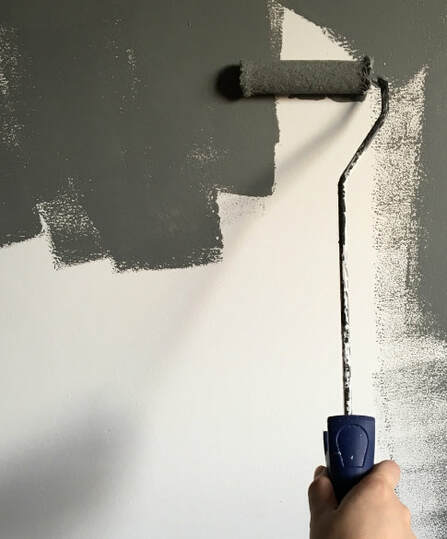 Types of Paint You Can Use for Rainy Days If you’ve checked your garage and are sure you won’t have problems with wet walls, you may want to consider using the following types of paint for your rainy day painting project: 1. Anti-Condensation Paint Anti-condensation paint works by adding an extra layer of insulation, which can reduce dampness of walls and prevent the formation of molds. It is used to reduce the effects of condensation, which forms between warm air and a cold surface. 2. Anti-mold Paint Anti-mold paint contains anti-microbial properties that destroy mold spores and prevent them from growing. They can’t get rid of mold that is already there, but it can stop new molds from sprouting. Anti-mold paints don’t last forever, though. They can last for about five (5) years, and after that the effects wear off. Also, anti-mold paints can’t do anything to address the problem of wet surfaces. 3. Anti-Damp Paint Anti-damp paint works because it has a water-reactive agent mixed into it. Despite its name, is better used after fixing the cause of the damp. They seal off dampness, however this causes the water to be trapped. The effect is having wet structures underneath the paint. If you plan to use this paint, remember that it only works against surface moisture and not dampness from beneath the surface of your structures. Advantages of Painting During a Rainy Day Why would anyone want to paint during a rainy day? It’s cold, it’s dark, and it seems better to curl up in bed with coffee and a good book. Well, here are a few good reasons to do it: 1. You can still be productive even if you can’t go out. Why not make good use of the time you’re stuck indoors by beautifying your garage? 2. You can finish your painting by the time the sun comes out. You’ll have more time to have fun! 3. Rain keeps the dust down. You won’t have to worry about dust and other small bits and pieces of dirt sticking to your newly-painted garage wall- the rain will wash them all away for you. 4. Since there won’t be many professional painting jobs during rainy days, expect rainy day discounts from painting contractors if you decide to hire professionals to do your garage painting. 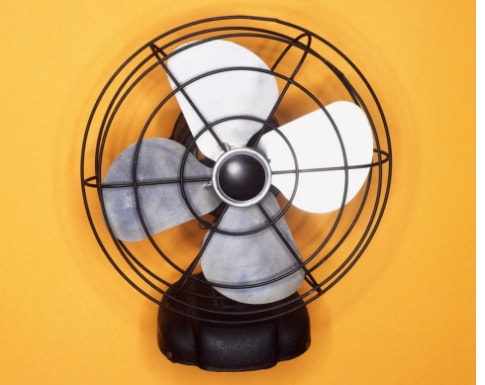 Tips for Painting the Garage on A Rainy Day 1. Use water-based paints. They emit lower levels of chemical vapors and less toxic chemicals overall, so they’re safer to use indoors. 2. Expect that the paint will dry slower during this weather. To increase drying time, you can open doors and windows to allow ventilation, as long as you can be sure the rain won’t come in and wash your paint away. If it’s too wet to open doors and windows, you can use fans and blow heaters instead. 3. Expect to find some molds in the area you want to paint. Remove those molds instead of just painting over them with anti-mold paint. 4. Don’t use oil-based paints. In general, oil-based paints are more difficult to work with. It may be tempting to use in rainy weather since it skims over smoothly and will not get washed out with rain as easily as water-based paints. However, over time, oil-based paints will crack and peel. It is still best to use water-based primer and paint, but even if you do, check the acceptable temperature and moisture conditions for these paints. 5. Apply one coat of your water-based primer, then give it some time to dry. During rainy season, drying time is about three hours. Make sure nothing or nobody touches the painted surface while you’re waiting for it to dry. 6. If the primer is not yet dry after 3 hours, give it an additional two hours to dry. Once dry, you can start painting. 7. If you have an airless sprayer, use it to paint your garage. This makes painting faster, especially if you intend to paint the entire garage, including the walls, door and ceiling, and considering the slower drying time in the rainy weather. 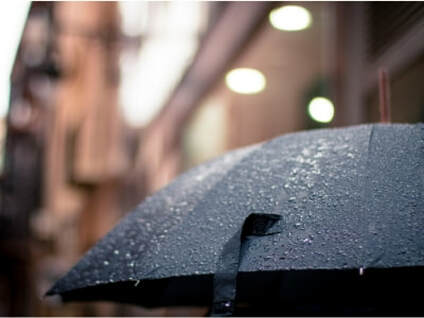 When To Expect a Rainy Day in Your Area If you’re now planning to do your garage painting on a rainy day, take note of the usual rainy season in your area. In the US, the West Coast experiences heavy rainfall from September through May. The North American Monsoon, which affects Arizona, New Mexico, Nevada, Utah, Colorado, West Texas, and California, happens around late June to September. Across Georgia and South Carolina, the rainy season starts late winter, during February or March. Summer is the time of the second heaviest rainfall in Georgia, and the time of maximum rainfall in Florida. Now that you know, you can start planning your garage painting project and make the most out of those rainy days. Painters in Warner Robins, Macon, and adjacent areas If you need a reputable house painters in Warner Robins, Macon region who understand the needs of their clients look no further contact the experts at Pizzazz Painters Warner Robins. Check us at https://www.pizzazzpainterswarnerrobins.com/ and schedule your appointment for a free painting estimate or call us at 478292-2821. We are here to help!
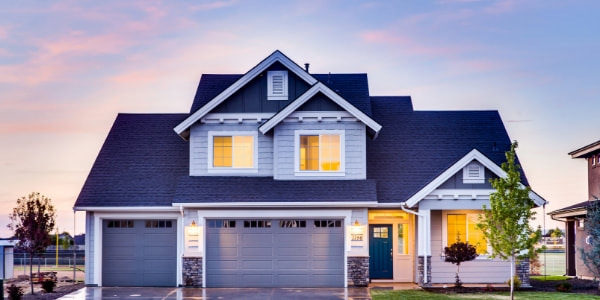 Some Tips When Painting Your House for Selling When you are repainting your house to sell it, you shouldn’t go crazy with the paint job that you give the house. It’s tempting to add your character into the paint job that you will be effected upon the house but keep in mind that you will not be the one who will be living in the house. At this point, you don’t even know yet what the next house occupant likes or dislikes. Buyers might not have the same taste in color as you do and so going bold on the colors might put off some buyers from choosing your house. Instead, choose a neutral color that will appeal to a broader audience. This way you have a larger pool of would-be buyers, and you can afford to be a picky seller. Another thing to keep in mind is to paint both the interior and exterior of your house. The exterior of your house will give the prospective buyers their first impression, and this will contribute much to their decision on which house to buy. Likewise, the interior painting of the house will make it appear cleaner and brighter. If you forgo with painting the house, there would be many prospective buyers who would decide against buying your house solely because it doesn’t appear large enough or clean enough. If you can’t decide on a new color for the painting job, stick to gray-blues for the walls and navy blue for the accents or seek advice from the professional painters in Warner Robins. Houses with greyish colors have been known to sell faster compared to others. Except for when the blue hues are painted in the living room. It has been reported that living rooms painted hues of blues don’t sell for so much. Other colors you will want to avoid are yellow in the kitchen, white in the bathroom, and red on the dining room.  Painting the House Before Selling Is Not Always Ideal Painting your house is not a cheap feat. It can cost several hundreds to thousands of dollars. It is essential, therefore, to make sure that the paint job you’re getting is cost effective. Before embarking on a house painting project, think about how much value the paint job would add to your home. In some cases, it might not be worth spending money if you will not be getting a proportionately larger value for your house after the paint job. This is especially true in house markets where there is a preponderance of buyers who prefer fixer-uppers. For some buyers, getting a new house is a chance for them to add their character to the physical appearance of the house. In some instances, the housing market may be booming, and so it wouldn’t matter whether you paint your house before selling or not. The house will sell just the same. In this case, you shouldn’t worry about painting your house, or else you will just be burning money and wasting time. 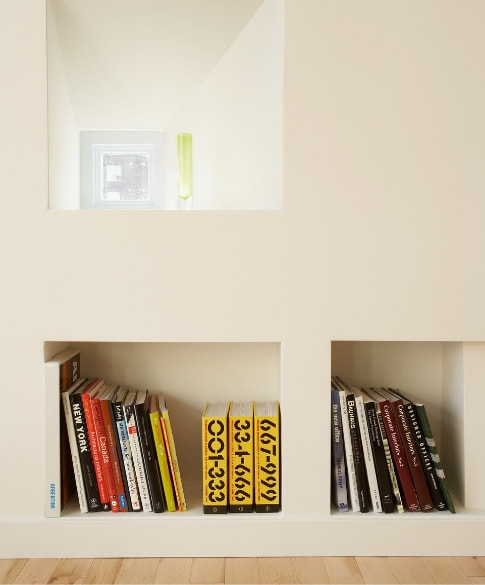 Other Things You Should Do Before Selling Your House
A few things you can do to make your house look clean and tidy is to throw away everything that you do not use in the house. This is an excellent way to start getting rid of your unessential things before you will have to move to a new place. Also, keep in mind that your counters and tables should be as mess free as possible. Do not leave things on counters except for a few decorative items which can add appeal to the interior design of your home.
An affordable project would be to mow the lawn and add some plants that will perk up the place. It gives a signal to the buyers that the place is full of life invokes positive feelings about the place. 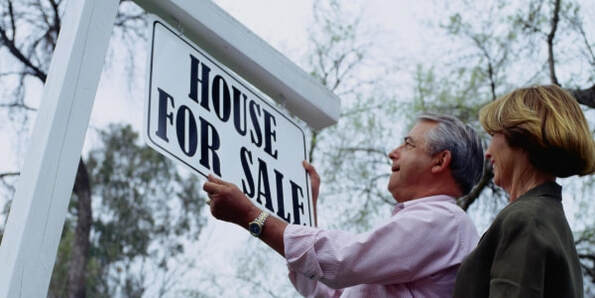 When to Sell Your House House markets, much like other types of markets there are, fluctuate in prices throughout the year or even from year to year. If you’re not in a hurry to sell a house, it might be a good idea to wait for some time to use the fluctuating market price of houses as an advantage to you. In Warner Robins Georgia, the best time of the year to sell a house is during spring. This is advantageous to the seller because, at this time, all the work you put in to beautify the outside of your house will pay off. If you painted your home, cleaned your lawn, and planted some flowers, the spring season will make your house look even livelier, thus, increasing the curb appeal of your home. It’s a good idea to list your home in the first fifteen days of May, preferably on listings that go live on Saturdays, so that it sells faster and at a higher value. You’ll want your house to be in a listing that goes live on a Saturday since that is the time when most buyers have the opportunity to look for homes assuming that most buyers will have a traditional job that occupies their time during the weekdays. To sum it up, when you are thinking of selling your house, it is a good idea to do a bit of work to freshen up and update the look and feel of your home. This can be done by repainting the house, or some sections of it, decluttering the place and keeping the lawn well-maintained. It is also relevant to time the sale to maximize the price trend in the housing market. This way you will sell the house for more profit compared to when you sell off-peak season. In addition to that, the spring season also gives many benefits when staging your home for the sale. Painters in Warner Robins, Macon, and adjacent areas If you need a reputable house painting in Warner Robins, Macon region who understand the needs of their clients, look no further. Contact the experts at Pizzazz Painters Warner Robins. Check us at https://www.pizzazzpainterswarnerrobins.com/ and schedule your appointment for a free painting estimate or call us at 478-292-2821. We are here to help! Painters proudly serving in Warner Robins, Macon, Bonaire, Byron, Kathleen, Lizella, Perry, Fort Valley Bibb County Georgia, Houston County Georgia, Peach County Georgia, Macon County Georgia, Crawford County Georgia 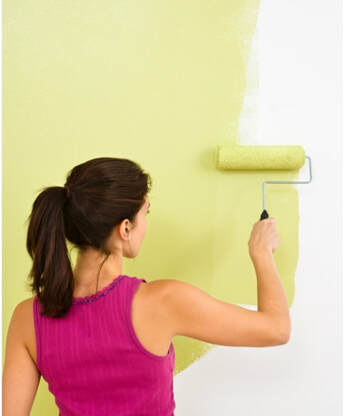 Beautifully painted homes give loads of benefits not just to the homeowners but also to the neighborhood as well. It perks up the community which could otherwise look sad in glum weather; adds character to a home, and it even defends homes from environmental elements. But, paints are not impervious to the daily beatings of the external elements such as rain, sun, snow, or anything that comes into contact with the surface of your house. Colors can fade, the paint can chip, while you wanted to maintain the fresh look of your home. You might be wondering, how often should you paint your house? A good rule is to repaint your home every five to ten years. Not all paints and surfaces are created equal. The five- to ten-year estimate best applies to exterior acrylic paints. Latex- and oil-based paints might need to be repainted sooner than their acrylic cousins. There are also other factors which affect the lifespan of your house’s paint which will be discussed below. First, let’s look at the obvious signs that tells you when there's a need to repaint your property. 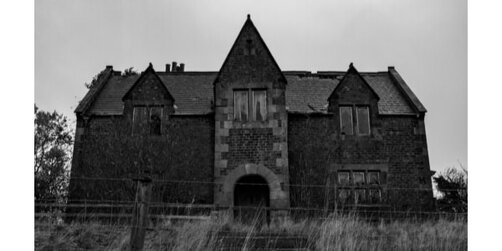 Ten signs which scream you need to repaint your house: 1. Rotten wood. The paint should protect your house and when your wooden walls show some rotting, it is a pretty clear sign that you should repaint your exteriors. It’s important to repaint your home when it begins to rot because that means the paint is off the quality or is not for long-lasting to get your home protected. If you still continue to ignore the rotting, it will lead you to more issues like changing everything from the sides and up to the walls which could incur bigger expenses. Also keep in mind that a new paint should be applied properly for its effectivity in protecting your house, or you might find out sooner or later, that a portion of your house is rotting again; you might end up paying for more than simply changing your walls. This is especially true for houses that are not painted by professional painters in Warner Robins. House painting might get a little handy or difficult, but hiring painting contractors in Warner Robins team can get the job easy for you. But if you're considering of a DIY project, be sure that you are attentive to details ensuring that your house is well-covered. 2. Fading color. The color of your house paint can lift up your mood (and your neighbor’s) and increase the appeal of your home, when it is chosen right. However, when pigments get a lot of UV exposure, they could fade. This is true in states like Georgia, especially in a very hot and humid summer - even heat waves. But aesthetics is not your only problem with fading colors, paints are made up of a mixture of various chemicals, and the atoms in each molecule of chemical move much faster at higher temperatures. When there's too much paint exposure to heat and UV radiation, the molecules tend to degrade. Over time, the paint loses its ability to protect your home. 3. Peeling paint Peeling paint simply means your walls are exposed to environmental elements. If there’s a portion of your house paint that peels off, moisture can get through that, and will slowly degrade the material of your walls. Similar to number one on the list, ignoring this indication can potentially cost you much more money than repainting it sooner. Sometimes, peeling can be a sign of bigger problems like molds in your walls. In this case, it is best to consult professional painting contractors in Warner Robins to have your house checked before having your house repainted. You wouldn’t want to spend money on repainting your house only to find out that you’ll end up with the same problem in a few months. When your house paint is not too old and there are already portions of peeling paint, that should ring the bell for you. 4. Chalking Chalking is the formation of fine white powder on the surface of your house paint. This can be caused by some weathering of the paint or the over thinning of paint during application. This may also be caused by using low-grade, highly pigmented paint. In that case, the chalking becomes more evident. This might leave your home with a powdery paint. You can remove the paint by washing your walls, but the chalking might also mean that a repaint is needed because the current paint itself breaks down and exposes your walls. 5. Personal choice Thinking of repainting your house to give it a different look is a perfectly good reason. After all, you’re free to decide what to do with your own property. You might have a new favorite color or feel that your paint colors aren’t trendy enough. Beyond everything, one of the basic reason why houses are painted is for the aesthetic value it brings to your home. Some people even prefer to repaint their homes when they are selling it, because other than providing worth to your property, it also entices the buyer to choose it because of its new paint; making the house look fresher. 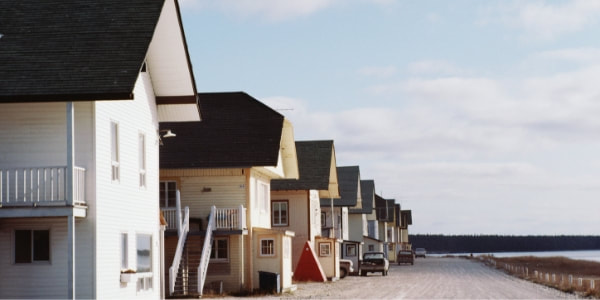 Factors that might affect the lifespan of your paint Changing the house paint every five to ten years is a good rule to follow but it is only a general rule and is not always applicable to all situations. The lifespan of paint is extremely variable from one place to another because there are several factors that affect the breakdown of the chemicals and pigments in the paint. Here, we will look at what factors affect the lifespan of your paint. 1. Quality of the paint As mentioned, some paints have different qualities; others can withstand weather elements. A good standard paint that is both durable and pleasing to the eyes will help you save a lot of money in the long run because it will lower your costs of repainting. 2. Weather When the weather in your area fluctuates heavily, you might see that you need to repaint more often than in other areas with mild weather. Too much sun exposure of your house will greatly affect the lifespan of your paint since the chemicals degrade faster under intense and chronic heat. Meanwhile, an amount snow and rain may physically degrade your paint too by making blisters and scratches on it from whence moisture can enter. 3. Location The idea of living by the ocean seems nice; it’s picturesque and it makes you feel like you’re always on vacation. But, it’s a different story when it comes to your house paint. Houses near the ocean tend to degrade easily because of the ocean spray it gets. Hence, you’ll have to repaint frequently compared to houses located in milder environments. 4. The material you’re painting over In general, paint over wooden material needs to be changed periodically especially if the wood has been exposed to weather elements prior to painting because it might have been degraded by the time it was painted over. Materials that retain paint for so many years include aluminum and vinyl that might make the paint last for 20 years! Be sure that the paint is applied well and choose good quality paint. 5. Extreme temperatures at the time of painting This is bad news for houses in locations with extreme weather conditions, such as having excessive humidity whether too cold or too hot. When there’s extreme humidity at the time of painting, the paint doesn’t dry well enough because there’s extra water vapor in the air. When it’s hotter, your newly painted house might get blisters. When it’s colder, the paint will not create a good film. Hence, the paint won’t adhere to the surface well. To sum it up, remember to repaint your house in five to ten years depending on the factors laid out above and while you’re repainting or getting the painting job done by a contractor, remember to choose a good quality paint and only paint during optimal conditions. Ten years is quite a long time. You’ll want to make sure that the color suits your aesthetic taste and creates a positive impact on your mood. More often than not, always remember to check every corner of your house for possible sign of repainting. Painters in Warner Robins, Macon, and adjacent areas If you need a reputable painting contractors in Warner Robins, Macon region who understand the needs of their clients look no further. Contact the experts at Pizzazz Painters Warner Robins. Check us at https://www.pizzazzpainterswarnerrobins.com/ and schedule your appointment for a free painting estimate or call us at 478-292-2821. We are here to help! Painters proudly serving in Warner Robins, Macon, Bonaire, Byron, Kathleen, Lizella, Perry, Fort Valley Bibb County Georgia, Houston County Georgia, Peach County Georgia, Macon County Georgia, Crawford County Georgia  Kids-friendly Painting Services in Warner Robins, GA Kids-friendly Painting Services in Warner Robins, GA So you’ve found a vibrant new paint color for your child’s room, but now you’re faced with a dilemma because you want your child to have a beautiful freshly painted room and at the same time you might be worried about repainting your kids' rooms because of the fumes the fresh paint would leave behind. So, is it safe for kids to sleep in a freshly painted room? Generally, YES! With the recent innovations in paint technology nowadays, you will only need to wait for three to four hours for the fumes from the paint to dry and, voila! Your kids can sleep safe and sound in their freshly painted beautiful bedrooms. Of course, the paint has to dry first which means during the three to four hours. You should ventilate the freshly painted room well to ensure that the fumes actually go out of the room. That’s good news for all the do-it-yourself moms and dads out there! Now, the fear of paint fumes will never stop you from getting creative with the colors for your home projects. And, children’s rooms are not just colorful and vibrant but more importantly, they are safe for the health and the environment. It’s important to note, though, that this only applies to water-based paints that are commonly used in homes. Not all types of paints are created equal, and parents should scrutinize the types of paints used in homes, especially in children’s rooms. 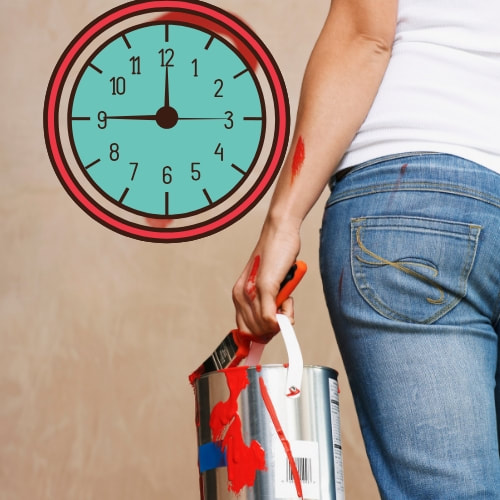 House Painting in Warner Robins, GA House Painting in Warner Robins, GA What’s the point of waiting for the paint to dry anyway? You might be wondering why there’s a need to wait for paint to dry before sleeping in a newly painted room. Isn’t it enough to be careful not to touch the wet paint? After all, nobody wants to smudge the paint on their beautiful new walls. The reason why we need to wait for paint to dry is because of VOCs. According to Toxtown.nlm.nih.gov, VOC stands for volatile organic compounds. Unfortunately, organic in VOC does not mean it’s healthy. Quite the opposite, actually. Here, organic means that there is at least a carbon molecule in its composition. VOCs are chemicals that can easily turn into gases at typical room temperature and they are very bad for you. Especially, if you will be sleeping in that newly-painted room. We all know that house paints come in liquid forms and they’re made of a mixture of chemicals. As you paint these chemicals onto your wall, the paint will start to dry, and some chemicals will begin to turn to vapor. These are the VOCs. When they turn into vapor, they react with sunlight and nitrogen oxides, which are naturally present in the air to produce ground-level ozone, also known as “smog”. VOCs are not just found in paints. They’re also in cigarettes, cleaning fluids, air fresheners, wood preservatives, and pesticides. As for air quality, notice the mention of cigarettes and pesticides. No one wants their children sleeping with fumes as harmful as those in cigarettes and pesticides, right? So then, nobody should ever sleep in freshly painted rooms without waiting for the paint to dry. VOCs are so dangerous that even short-term exposure to them may cause irritation of the eyes and respiratory tract, headaches, dizziness, visual disorders, and memory problems. And, long-term exposure is even more dangerous. It can cause damage to the liver and kidneys because these organs are responsible for cleaning out your body from toxins, and it also affects the central nervous system. Also, with a study made by Robert Dales & Mark Raizenne in 2004, manifestations of damage to the central nervous system could be a loss of coordination and dizziness. Lastly, as many harmful chemicals, VOCs can also cause cancer. So when you’re using paints with VOCs, make sure to wait sometime before sleeping in the newly-painted room. Again, if the paint is water-based, wait three to four hours and if it’s oil-based, it’s best to wait for at least 24 hours. The waiting time is important to let all those VOCs evaporate and get off the room so that they don’t harm your child. 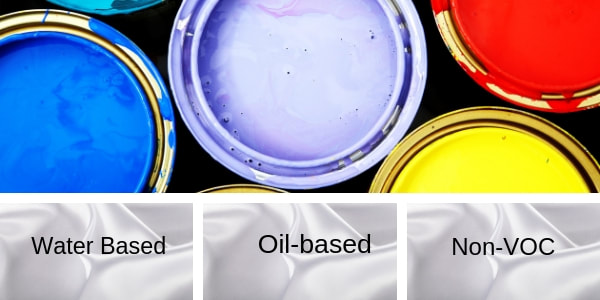 Types of Paint Explained By Professional Painters in Warner Robins, GA Types of Paint Explained By Professional Painters in Warner Robins, GA Types of Paints There are three major kinds of paints that are used in painting homes and these are water-based paints, oil-based paints, and low- and non-VOC paints. Water-based paints are more common in homes and interior painting. They have a wider range of colors, they dry at a lesser time, and are generally more flexible in terms of its use compared to oil-based paints. On the other hand, oil-based paints have great resistance to harsh wear and tear, and they can produce a smooth finish that you cannot get when you are using water-based enamel paint. So, while water-based paints are more commonly used, some people might opt for oil-based paints to use in their homes. This does not necessarily mean that oil-based paints are harmful if used in homes as told by Kraudeltpainting.com.au. Oil-based paints just need a bit more time to dry and have stronger odors as well. It is safer to wait about 24 hours for the paint to dry and the fumes to go out of the room before sleeping in your freshly painted room if you’re using them. Not waiting long enough for the paint to dry might cause your children headache, nausea, or sinus discomfort. Now, on to low- or non-VOC paints. These are considered the safest of all house paints because they either have a reduced amount of those nasty VOCs in them or the paint manufacturers have somehow managed to get rid of them from their paint’s chemical formula. It’s so safe that you don’t even have to wait for any period of time before your child can start using the freshly painted room, as advised by professional painters in Warner Robins. 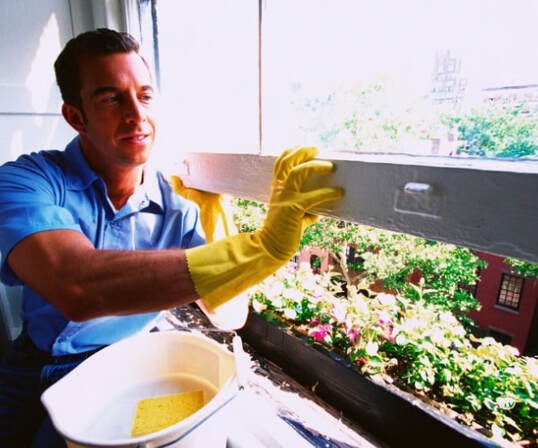 Interior Painting in Warner Robins, GA Interior Painting in Warner Robins, GA What to do to get rid of VOCs? With all the harm VOCs in paints cause, should we just forego with paints? Absolutely not! What kind of world would we be living in if we can’t have the ‘color of the year’ painted on our walls? That’s terrible for the eyes and that’s terrible for the children’s playrooms. Colors are known to transform otherwise drab rooms into a lively one with lots of characters and they affect moods and adds to a general satisfaction from one’s surroundings. The problem with paints are the VOCs in them. However, because VOCs are volatile that they turn to gas quickly, they don’t stay for so long in rooms. As long as you ventilate the room well while the paint is drying, the VOCs should be able to get out of the room and dissipate into the atmosphere. Aside from ventilating your child’s room, another thing you can do to eliminate paint fumes is to put buckets of water in the room. The water will absorb some of the vapors so that the fumes leave the room faster. Just be sure to remember to take out the buckets from the room when the room’s ready for use though. Another way to do this is to light candles in the room. The volatile compounds in the paint will be burned and consumed by the flames. However, as you can probably imagine, this is not a very safe way of removing fumes from your child’s room so use this method very cautiously and never leave the lit candles unattended. Non-VOC Paints, The Safest of Them All. If you ask me, homes should just use non-VOC paints all the time. Regardless if the room your painting will be used by children or not. Non-VOC paints are very safe, almost odor-free, and do not release nasty chemicals that harm the people living in the painted rooms. Studies have also shown that these paints do not trigger allergic diseases in school-aged children. In addition to being safe for your child’s health, non-VOC paints are also environmentally friendly because solvents in these paints are significantly reduced. They emit lesser amount of chemicals that any other type of paint available in the market. If there are no non-VOC paints in your area, use the paint with the lowest VOC. This way, it won’t take so much time for the fumes to dissipate out of the room. By the time your child will use his freshly painted room, all the fumes will have gone away as of the study made in 2016. To summarize, you don’t really have to ban colorful paint from your children’s rooms. While paint have chemicals that can have hazardous effects to the health, it’s easy to avoid such effects by letting the paint dry and ventilating the room for some time before using the room. This will help the fumes dissipate out of the room so that the room can be safe for your children and if you’re still worried that some fumes might linger in the rooms, use non-VOC paints. They are the safest and you will not need to wait for a long time before you can use your newly painted room. Painters in Warner Robins, Macon, and adjacent areas Quality Painting by Pizzazz Painters in Warner Robins, GA Quality Painting by Pizzazz Painters in Warner Robins, GA If you need a reputable painting company in Warner Robins, Macon region who understand the needs of their clients look no further contact the experts at Pizzazz Painters Warner Robins. Check us at https://www.pizzazzpainterswarnerrobins.com/ and schedule your appointment for a free painting estimate or call us at 478-292-2821. We are here to help! |
CategoriesAuthorPizzazz Painters Warner Robins. I'ts a family owned small business committed to providing quality services guaranteeing the satisfaction of our customers. Archives |
Residential - Commercial Painters and Remodeling in Warner Robins, Georgia
Committed to your complete satisfaction.
Pizzazz Painters Warner Robins
Proudly serving:
Warner Robins, Macon, Bonaire, Byron, Kathleen, Lizella, Perry, Fort Valley , Hawkinsville, Centerville GA, and adjacent areas.
Counties: Bibb , Houston, Peach, Macon, Crawford
Painters in Warner Robins GA
Painters in Macon GA
Painters in Centerville GA
Painters in Hawkinsville GA
Warner Robins, Macon, Bonaire, Byron, Kathleen, Lizella, Perry, Fort Valley , Hawkinsville, Centerville GA, and adjacent areas.
Counties: Bibb , Houston, Peach, Macon, Crawford
Painters in Warner Robins GA
Painters in Macon GA
Painters in Centerville GA
Painters in Hawkinsville GA
|
Contact
Painters in Warner Robins Georgia
Painting Company in Warner Robins and adjacent areas. 478-292-2821
|
Hours of operation
Monday 9:00 AM to 7:00 PM Tuesday 9:00 AM to 7:00 PM Wednesday 9:00 AM to 7:00 PM Thursday 9:00 AM to 7:00 PM Friday 9:00 AM to 7:00 PM Saturday 9:00 AM to 7:00 PM Sunday 2:00 PM to 5:00 PM |
Copyright © 2023 All rights reserved.
Privacy Policy and Term Services
Privacy Policy and Term Services




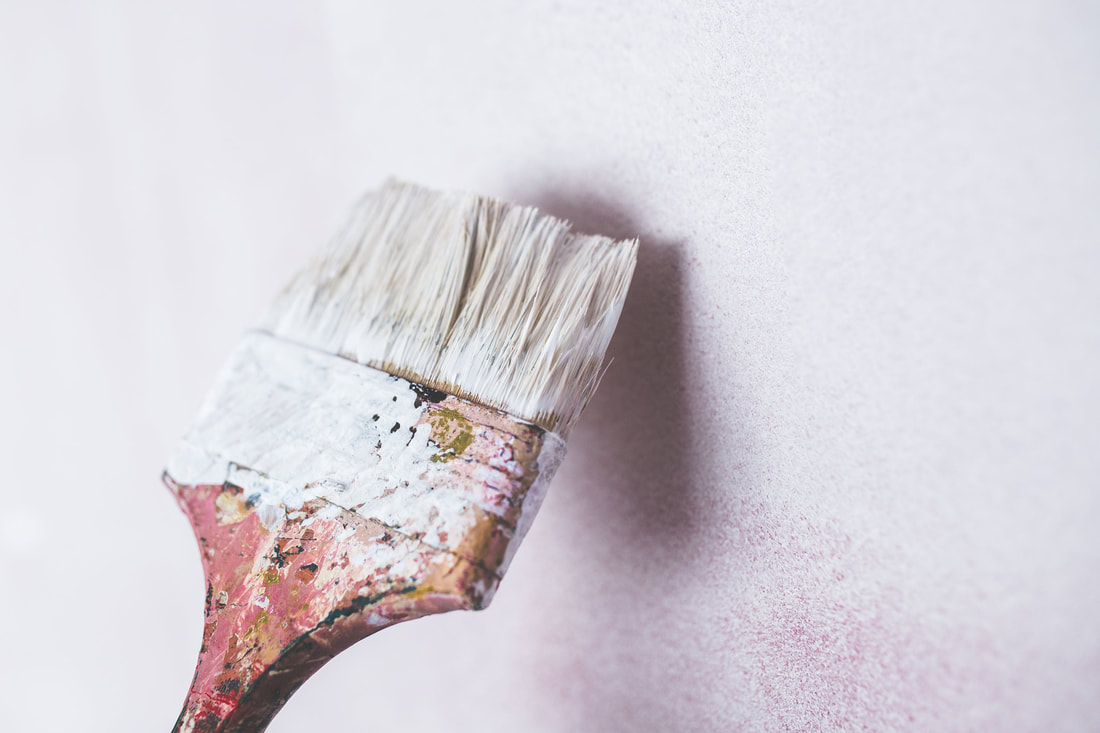
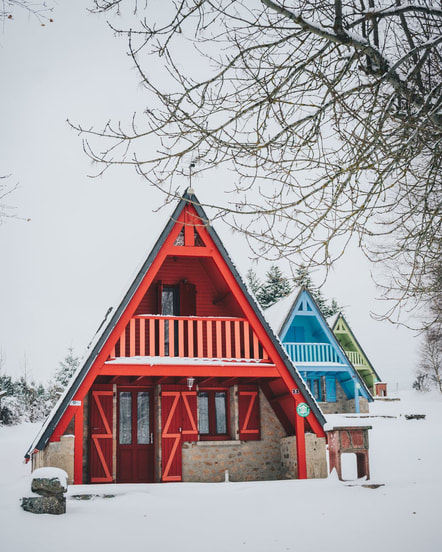
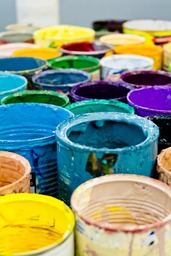
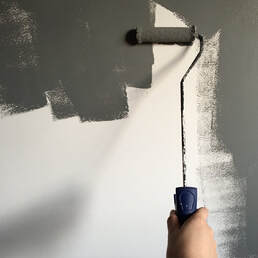
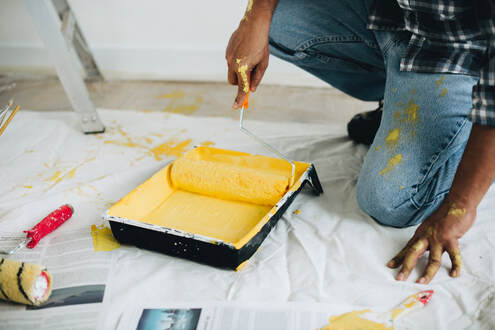

 RSS Feed
RSS Feed

